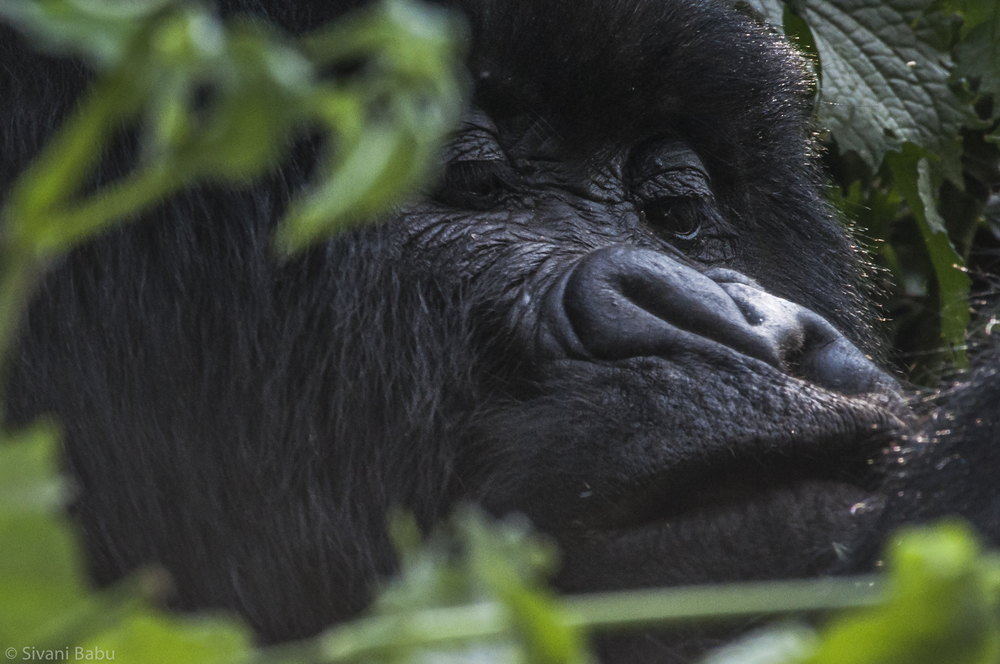
In hindsight, my mistake was making eye contact. I should have known better. I went to law school, so it’s not like I had never encountered an inebriated male before. There is just something about alcohol that can turn eye contact into an invitation. He stumbled over to me. If he hadn’t been headed my way, I might have laughed at his seeming lack of coordination, but he was headed my way. And he was a gorilla. No, really. That’s not an insult. He was an actual gorilla. Up in the Virunga mountains, a volcanic range shared by Rwanda, Uganda, and the Democratic Republic of Congo, a rainforest of bamboo and evergreens shelter forest elephants, golden monkeys, and one of the world’s two distinct populations of critically endangered mountain gorillas.
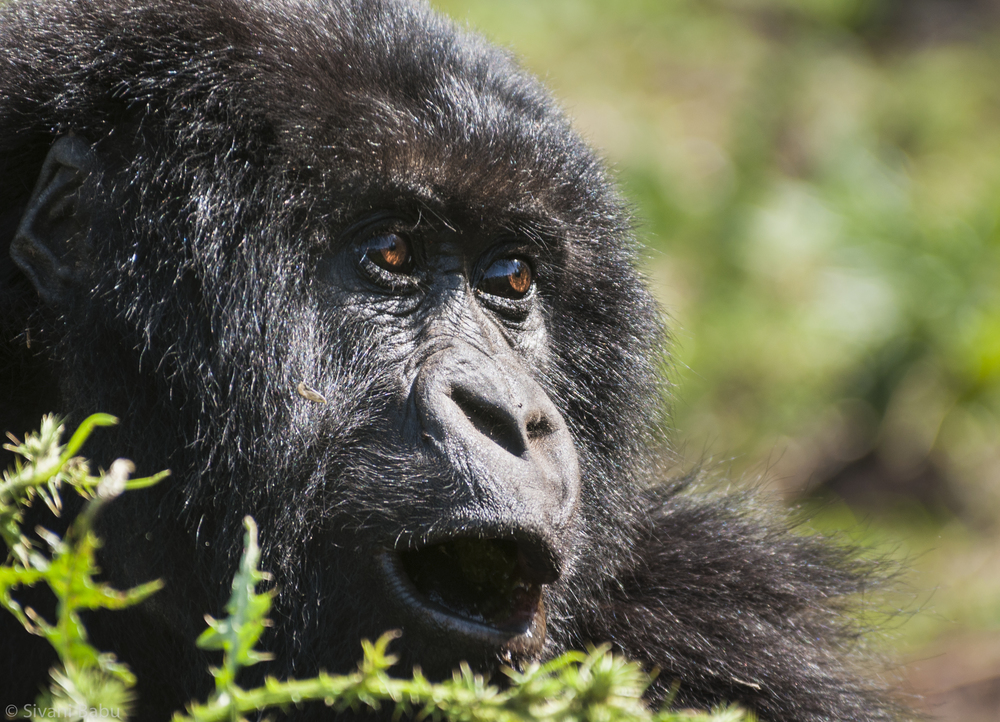
I had become enchanted with these greatest of great apes in 1994 when I first read Dian Fossey’s Gorillas in the Mist. Back then, as Rwanda was collapsing into senseless violence, the idea of seeing the gorillas in their natural habitat seemed like a really bad idea at best and a pipe dream at worst. Perpetual instability tormented the region and the threats to the gorillas were as great as they had ever been. But well over a decade after the genocide, stability had returned to Rwanda, albeit at a significant and continuing cost, and the mountain gorillas, once thought to be destined for extinction, were making a slow comeback of their own.
The trip into the Virungas had left behind the steel and glass of Kigali, Rwanda’s capital. Concrete, sheet metal, mud, and thatch dotted the foothills. It had rained through most of the night and my attempts to stave off the mountain chill by curling around a hot water bottle were only partially successful. In the early morning, I congregated just outside Volcanoes National Park with 79 other people who had been issued one of the 80 gorilla trekking permits that day and we were divided into small groups. Each group would get an hour with one habituated gorilla family. After a short briefing from the park rangers, we set out.
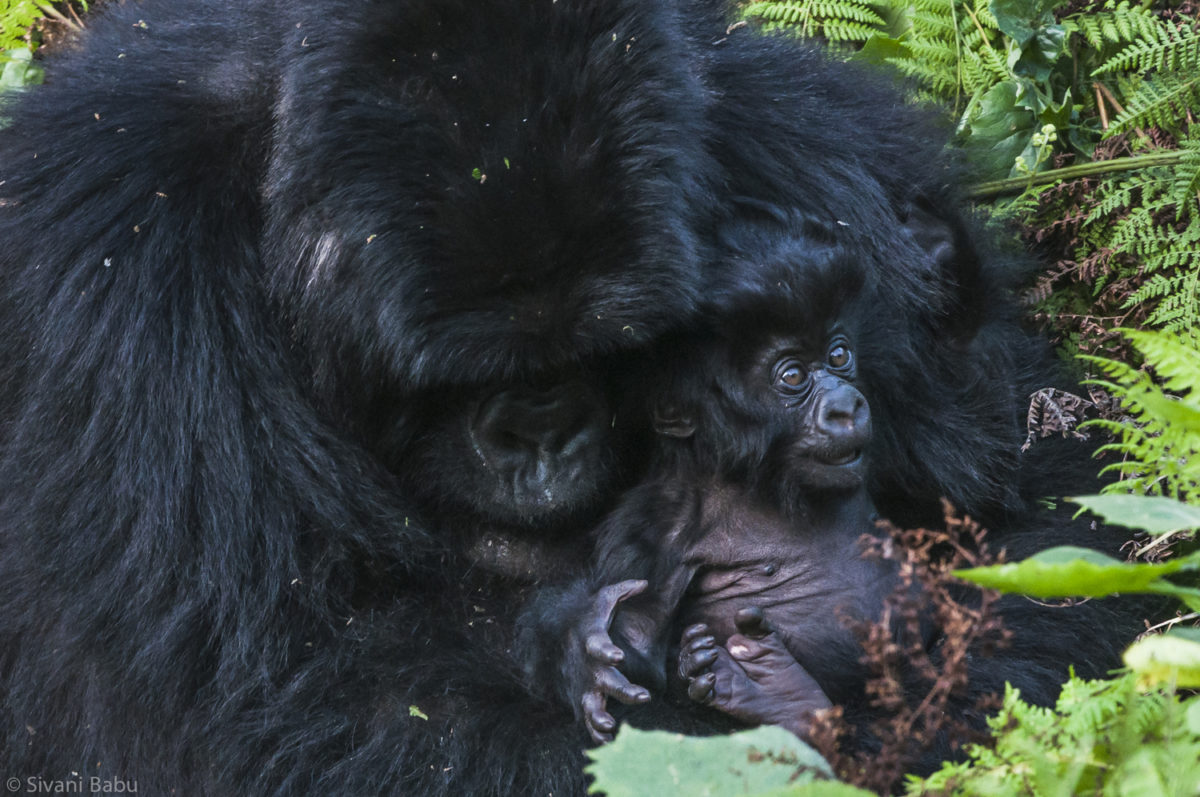
In the years since I have seen internet claims of strolling along “clear” trails to find gorillas foraging for thistle and wild celery, and I’ve wondered how exactly I missed that particular excursion. If there were trails, I never saw them. Instead, I followed a park ranger and gorilla spotter with a machete into the rainforest. We scrambled over anthills, through thickets of stinging nettles, and into groves of bamboo, sunlight filtering through the forest canopy and dancing on the ground to light our way.
I don’t know exactly how long we were hiking before we came upon them, but I remember looking up, gulping for the thin air of the mountains, and spotting two gorillas hanging from a tree. While gorillas are capable tree climbers, they are ground dwellers. Generally, if there are gorillas in trees, they are children at play. If you’ve ever doubted that animals are rather like humans, just a few minutes with a family of gorillas will dispel that notion. They may not be our closest genetic relatives, but they are certainly our behavioral relatives.
I stood rooted in place as the children played. Despite this family being habituated to the presence of people, I felt like any move I made would disturb them. Like the entire scene was unfolding before me in a bubble that I might inadvertently pop. The kids swung from branch to branch, vine to vine. At one point they both hung precariously, jockeying for position and getting increasingly frustrated with one another until one huffed off, turning back to yell at the other. I watched as the young gorilla loped over to an adult female with an infant cradled in her arms and began complaining. There was no other way to describe it. He was agitated and animated and reminded me so much of the children in my own life. Then I watched as the female had the same reaction that millions of mothers have every day. She gently pushed the young gorilla toward where the other was still playing as if to say, “deal with it.” And off he went, back up into the tree where he and his sibling resumed their roughhousing.
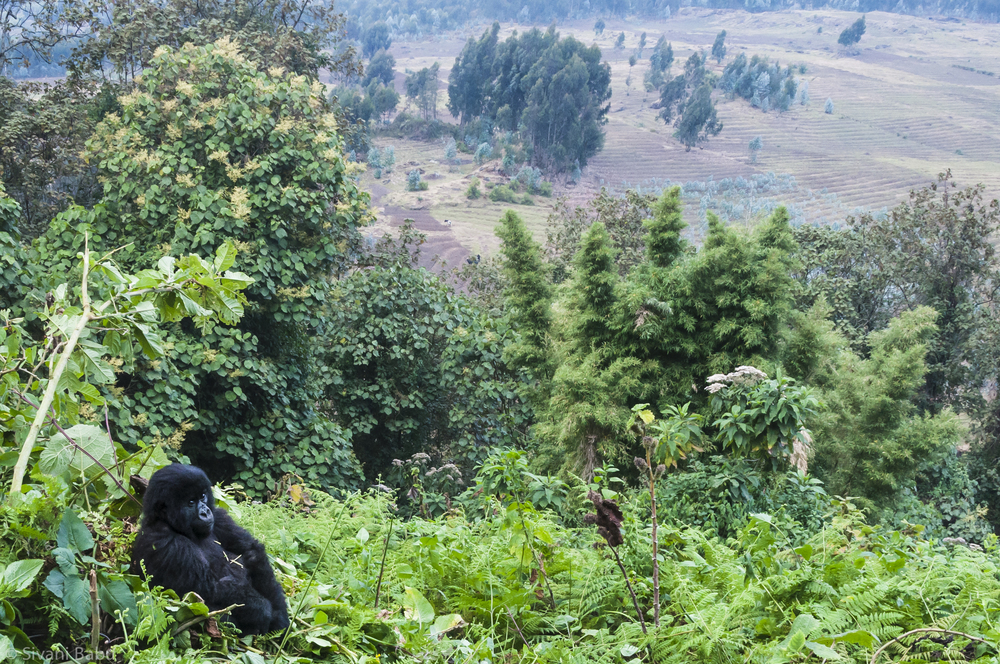
I laughed out loud. The spell wasn’t broken, but it was no longer paralyzing and the camera finally came out. For the next hour, we moved with the gorillas, voices low, movements smooth and slow. The head of the family, a silverback that had fought for control in an epic multi-day battle, came around acting like the king he was. And time passed like water through a sieve.
Usually, I try to limit the number of photographs I take in an effort to make each shot a thoughtful one. This was not one of those times. I was overcome by the majestic strength and playful interactions of these animals and I fired off picture after picture. Each moment was more humbling than the last. After nearly an hour of nonstop shooting, I took in my last moments with the gorillas without a viewfinder. I put my camera away. It was a decision that I would regret for a while before realizing an important truth: Sometimes, missed photographic opportunities make the best memories.
As we came down the mountainside we encountered a few more members of the family and stopped to observe them. Something seemed off with a member of the group, but I wasn’t sure what it was. The ranger came to a stop nearby and smirked. “He is drunk,” he said gesturing to the gorilla. I must have looked like I didn’t believe him, mostly because I didn’t believe him, but he explained that the gorillas get drunk on bamboo shoots. A little independent research when I returned home confirmed that it is the fermented bamboo sap in the shoots. Typically, gorillas counter their natural fermented sap consumption with enough vegetation to nullify the effect. Except of course, when they’re having a party. Initially, I wasn’t sold, but the more I watched the gorilla stumble around, the clearer it became. He was stoned out of his gourd.
There were a million questions I wanted to ask. How often did they engage in this behavior? Would they eventually pass out from alcohol consumption? What is the gorilla equivalent of a Philly cheesesteak at 3:00 AM? Each question was more ridiculous than the last, but I might have voiced them had things not taken a turn toward the bizarre (as if a drunk gorilla wasn’t bizarre enough). I had that feeling you get when you know someone is staring at you. I turned and sure enough, the gorilla was looking my way. I recalled the ranger’s earlier briefing and his instruction to walk a line between being dismissive by making no eye contact and being aggressive by making too much eye contact. Perhaps I walked the line a tad too well because before I could get to my camera, 250 pounds of drunk gorilla started stumbling toward me. My adrenal glands started working overtime and I heard the ranger reinforce that I should not take off at a dead sprint. It was an unnecessary instruction, as my curiosity frequently overrides both fight and flight, and, as much as anyone else, I wanted to see what was about to happen. Each time the hulking gorilla stumbled, I wondered if he would get up again. Each time, he did. As he got closer I could see leaves and plant debris flecked in his fur. His breathing became audible. Before I knew it he was standing just to the side of me. The push was gentle but unexpected, and it was my turn to stumble. In an effort to catch my balance, I put my hand down in a patch of stinging nettles, but it barely registered. He moved in again and when his arms came up once more I braced myself for another, hopefully, gentle push that never came. Instead, he sat down. His arm came around the side of me, over my shoulders and he pulled me into a hug. And then, out of curiosity or drunken confusion, he tried to groom me.
I processed the events in snippets as they were occurring. The entire exchange lasted less than a minute. Thankfully, I suppose, my new friend didn’t find what he was looking for and quickly lost interest. No offense taken, I was left shaking not from fear, but continued disbelief that any of this had actually happened. Even now, after having recounted the events more times than I can recall, it seems unreal. No one ever needed to tell me how rare the experience was, or that although gorillas are not generally aggressive, their size and strength can make them an unintentional threat. I walked away knowing both of those things. But I also walked away more fascinated than I had ever been by these animals and the perils they face.
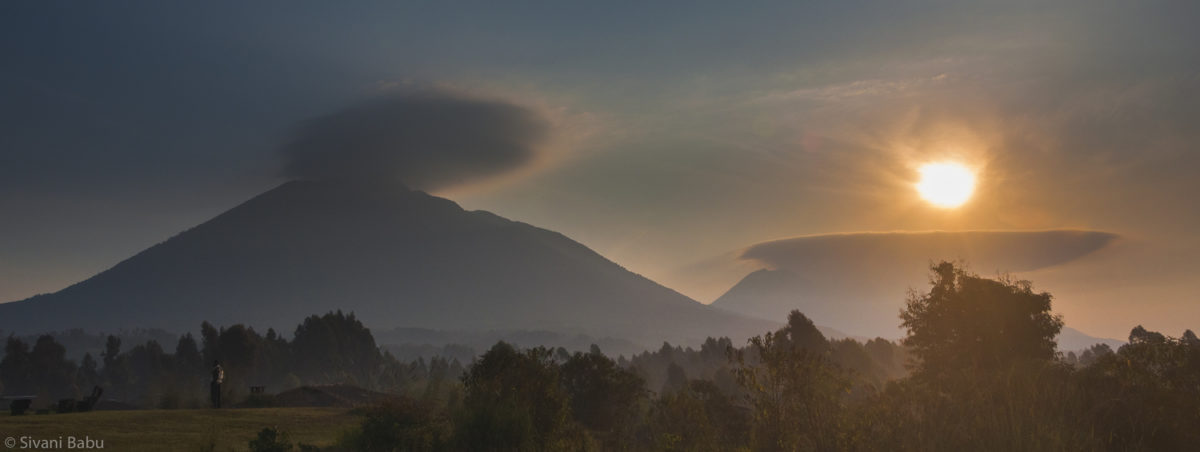
As much fun as I have telling the story of the drunk gorilla, the sum of spending time with the gorillas was far greater than a 45-second personal encounter. The health of the gorilla population is so closely tied to the health of the nations in which they reside. The dramatic political instability that plagues the region also plagues the gorillas. In the Democratic Republic of Congo, which neighbors Rwanda, hundreds of park rangers have been killed over the last decade while protecting the national parks in which the gorillas live. The gorillas face threats from poachers, loss of habitat, communicable diseases, and land mines, but they are still here. They are magnificent, intelligent, and perhaps most of all, resilient. Much like people.
Check out the Gorillas and Chimps Workshop or other African safaris.
